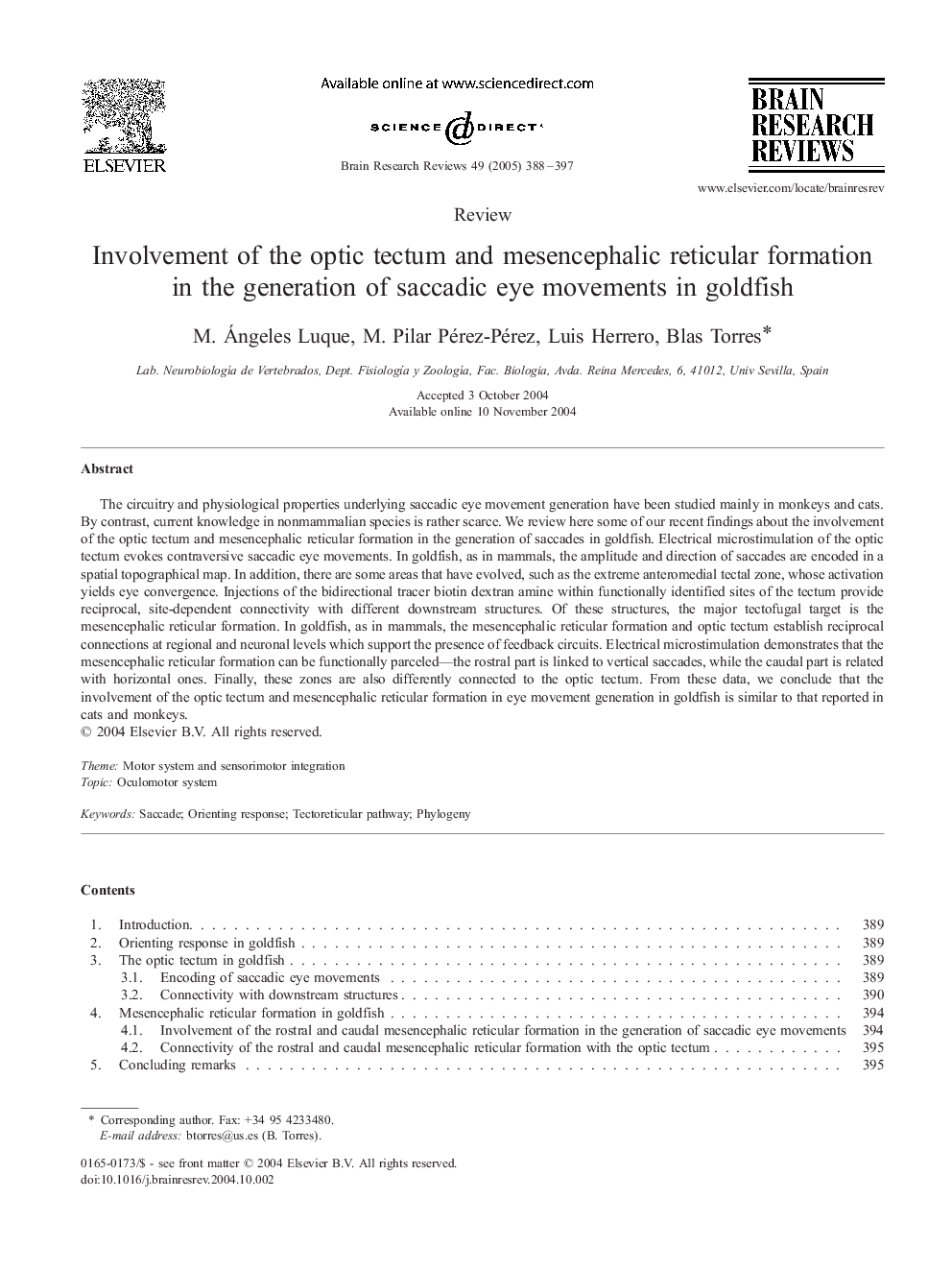| Article ID | Journal | Published Year | Pages | File Type |
|---|---|---|---|---|
| 9423092 | Brain Research Reviews | 2005 | 10 Pages |
Abstract
The circuitry and physiological properties underlying saccadic eye movement generation have been studied mainly in monkeys and cats. By contrast, current knowledge in nonmammalian species is rather scarce. We review here some of our recent findings about the involvement of the optic tectum and mesencephalic reticular formation in the generation of saccades in goldfish. Electrical microstimulation of the optic tectum evokes contraversive saccadic eye movements. In goldfish, as in mammals, the amplitude and direction of saccades are encoded in a spatial topographical map. In addition, there are some areas that have evolved, such as the extreme anteromedial tectal zone, whose activation yields eye convergence. Injections of the bidirectional tracer biotin dextran amine within functionally identified sites of the tectum provide reciprocal, site-dependent connectivity with different downstream structures. Of these structures, the major tectofugal target is the mesencephalic reticular formation. In goldfish, as in mammals, the mesencephalic reticular formation and optic tectum establish reciprocal connections at regional and neuronal levels which support the presence of feedback circuits. Electrical microstimulation demonstrates that the mesencephalic reticular formation can be functionally parceled-the rostral part is linked to vertical saccades, while the caudal part is related with horizontal ones. Finally, these zones are also differently connected to the optic tectum. From these data, we conclude that the involvement of the optic tectum and mesencephalic reticular formation in eye movement generation in goldfish is similar to that reported in cats and monkeys.
Keywords
Related Topics
Life Sciences
Neuroscience
Neuroscience (General)
Authors
M. Ángeles Luque, M. Pilar Pérez-Pérez, Luis Herrero, Blas Torres,
